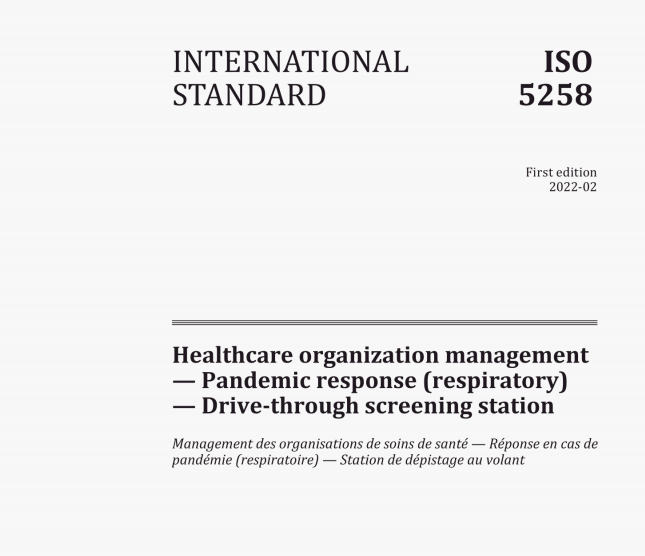ISO 5258:2022 pdf download.Healthcare organization management — Pandemic response (respiratory) — Drive-through screening station.
ISO 5258 specifies the operation of a drive-through screening station (DTSS) for mass testing as part of pandemic response management.
NOTE: COVID-19 is an exemplary disease for which such a station is developed.
Introduction
Pandemics demand swift, decisive and sustained action by governments and public health authorities. Actions that have proved effective are widespread testing, contact tracing and rigorous treating. For testing, drive-through screening stations (DTSS) can be used to test thousands of people each day. A DTSS can screen large numbers of people for the presence of a disease, with those testing positive told to self-isolate or referred for treatment, and those who had been in contact with an infected person told to self-quarantine. People presenting for screening at a DTSS remain in their car, which acts as a protective barrier for healthcare workers. The standard protocol for operating a DTSS can include processes such as a medical interview, examination and specimen collection through the car window. The use of DTSS can reduce the risk of transmission of the disease (including in hospital waiting rooms), relieve pressure on hospitals (which otherwise can be inundated with requests for testing), and free hospital resources for treating people the disease (including those that are otherwise necessary to disinfect areas used for specimen-taking).
This document was developed based on experience gained from, and procedures implemented to deal with, the COVID-19 pandemic, which was characterized as a pandemic by the World Health Organization (WHO) in March 2020. South Korea, in particular, used DTSS to control the spread of the virus without shutting down the country and without imposing extreme restrictions on people’s movement.
